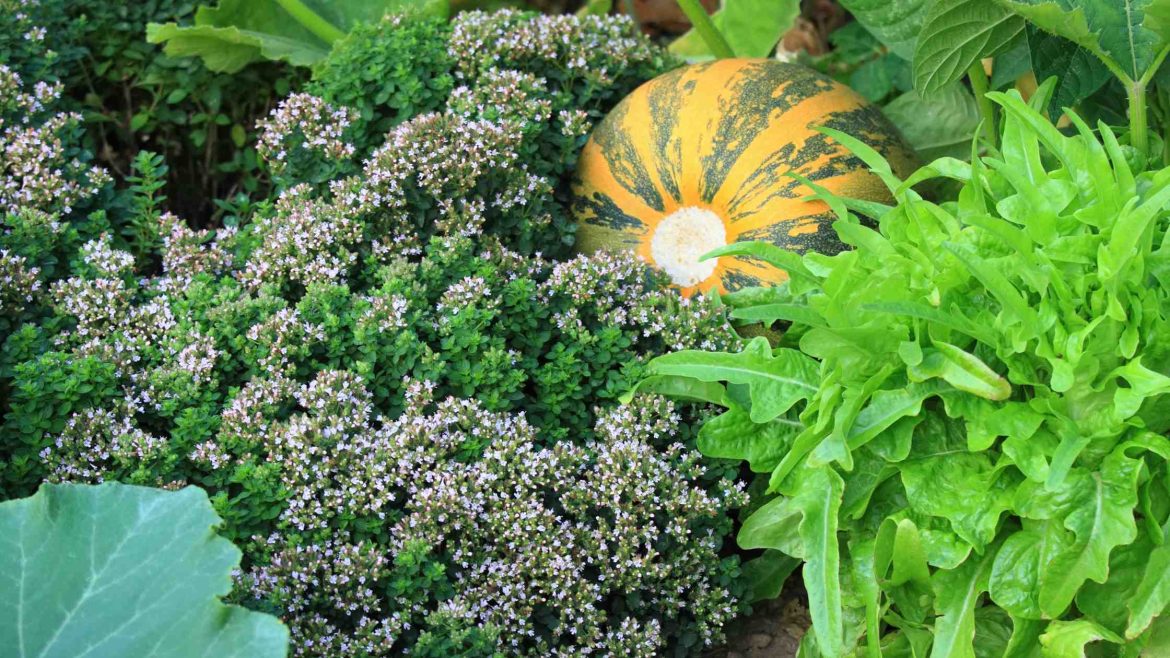What is Permaculture?
The term “Permaculture” is a contraction of the words “permanent” and “culture”, as coined by co-workers Bill Mollison and David Holmgren in the 1970s. Initially, it was a concept developed to describe a sustainable approach to farming which involved the design and implementation of permanent agricultural systems. It has since evolved to include a general approach to community development and management which focuses on the long-term sustainability of each natural force involved in our ecosystem. Effective permaculture garden design is governed by three ethics.
The Three Ethics Which Guide Permaculture Garden Design:
- Earth Care – This ethical guideline promotes a consorted effort on the end of permaculture practitioners to protect, preserve and restore the living and non-living natural elements within the ecosystem. The well-being and sustenance of every natural component (such as land, air, water, plants, insects etc.) should be a primary focus when implementing permaculture landscape designs. If one system/element is damaged, all others will be negatively affected.
- People Care – This guideline promotes permaculture farming systems designed to protect the health and well-being of all people within the community.
- Fair Share – This ethic is highly dependent on the compliance of the first two permaculture garden design ethics. It speaks to limiting consumption to facilitate sharing excess surplus with the elements involved in earth care and people care.
The Benefits of Permaculture Garden Design
Permaculture landscape design encapsulates much more than farming. It includes developing and maintaining communities with sustainable homes, food sources, and infrastructure and considers many other social factors. As a result of this holistic cultural approach, adopting permaculture design principles will provide tremendous short and long-term benefits for society. These are some advantages of permaculture:
- Protection and preservation of natural resources
- Self-sustained ecosystems
- Biodiversity
- Reduced cost
- Reduced pollution
- Economic and environmental resilience
The 12 Permaculture Design Principles
Principle #1 – Observe and Interact
This principle focuses on the “where” and “what” aspects of developing your system. Firstly, you must observe the area where you desire to implement your permaculture farming projects. From this observation, your permaculture landscape design should factor in the protection and preservation of all the natural elements within the ecosystem. These factors include (but are not limited to) soil, water, plants, animals, people, air, fungi etc.
Principle #2 – Catch and Store Energy
This principle focuses on designing your perma forest or permaculture garden to allow you to capture and store energy from your surroundings to perpetuate the self-sufficiency of your system. These energy sources may be wind, water, biomass or solar. An example of catching and storing energy would be situating crops in a region which allows them to obtain maximum sunlight throughout the day.
Principle #3: Obtain a Yield
With this guiding principle, permaculture garden designs ensure preference is given to high-yielding crops. You must consider the needs of the community to decide the type of crops you will add to the system. In many cases, your priority will be high-yielding food crops, but there are instances where you prioritise crops for lumber or other raw materials.
Principle #4: Apply Self-Regulation and Accept Feedback
This principle promotes self-awareness and regulation of our consumption. It focuses on all aspects of consumption in our daily lives (energy, food, clothing etc.). It also ties in closely with the fair share ethic, which promotes taking what you need, and sharing anything else (surplus) with others within the ecosystem. When working on a perma forest, you must be able to analyse the results of your permaculture landscape design based on the natural responses of the people and environment.
Principle #5: Use and Value Renewable Resources and Services
This principle focuses on using alternative energy solutions for sustaining the permaculture garden design. For example, designing a rainwater catchment system to supply irrigation water to crops and using solar panels or biomass to generate electricity are great ways to optimise and use renewable energy sources and services.
Principle #6: Produce No Waste.
This principle focuses on recycling and reusing “waste” products within the permaculture garden design. Waste products from any aspect of the system should not be discarded but should be used instead as sources of food or energy for another part of the garden. A great example of this would be using animal manure for plant fertiliser.
Principle #7: Design From Patterns To Details
This principle focuses on working and flowing with the patterns of nature. Before designing your permaculture vegetable garden, ensure that you study the entire ecology of the area. It will allow you to develop systems that will allow nature to continue to thrive along with your system. An example of this principle would be designing the garden so that the plants that need more attention are closer to you, and the ones that require less maintenance are further away. Another one would be to build a water catchment system where rainwater may naturally pool on the land.
Principle #8: Integrate Rather Than Segregate
This permaculture farming principle promotes designing a system in which all components are intertwined in some way, and work together to create a resilient system. This is how nature operates without human interference (consider natural phenomena such as the water cycle, food chain etc.). We must develop lifestyle habits that mimic this way of integration rather than segregation.
Principle #9: Use Small And Slow Solutions
This principle encourages the addition of long-term “investment” solutions to your permaculture garden design. This could mean planting crops whose primary purpose is not for immediate yield, but for a long-term solution such as fireplace wood in the winter.
Principle #10: Use And Value Diversity
When designing a permaculture garden, having a diverse ecosystem can prove invaluable. This means having a variety of plants, animals, topography and even people within the system. It promotes longevity, as each aspect relies on others to thrive.
Principle #11: Use Edges And Value The Marginal
Staying true to the no-waste principle, a permaculture garden design should include plans for using all spaces to increase productivity. This includes margins, edges, fence posts and the like, to create small habitats for vines and creepers. If you have a cucumber plant, a fencepost could facilitate a perfect habitat for it to grow.
Principle #12: Creatively Use and Respond To Change
This principle allows you to observe natural changes within your environment as a result of your permaculture garden design, and develop creative solutions to changes that occur. Let’s say, you notice that your wild indigo plants have attracted wild bees. You may choose to develop a section of your garden for bee farming and integrate it into your permaculture system.
Simple Permaculture Farming Projects For You To Try
Now that you understand what permaculture is, here are five projects for you to try:
- Hugelmound: This project would be considered a small and slow solution. All you need is some spare wood, logs or fallen tree branches. You can bury the wood, or pile them and put some dirt on top, allowing the wood to break down and provide nutrients to the soil. It also acts as a habitat for insects.
- Medicinal Herb Bed: You can make a small section of diverse medicinal herbs that you can use for ailments.
- Hedgerow: Create a productive perennial polyculture with a suitable hedgerow plant (such as chokeberry) to enhance your permaculture garden.
- Pollinator Garden: This simple project involves planting some perennial plants and setting up some hummingbird feeders to attract pollinators to your garden.
- Raised Bed: You can repurpose bricks or other materials to create a raised vegetable garden bed, especially if you have an area that doesn’t have the best soil. Create a raised bed and fill it with soil and compost and plant some tomatoes, okra, carrots, bell peppers and garlic.
Recap: Permaculture Garden Design
In this article, we covered the three ethics that guide permaculture landscape design, the benefits of permaculture farming, the 12 permaculture design principles and 5 “Perma Farm” projects for you to try at home.
How You Can Tithe Towards Permaculture Projects
At Seven Sisters Holistic Healing Institute, we support projects in the field of permaculture, food forests, sustainability, preservation, love and peace. Learn more about the couses that we support, or tithe towards the future of our planet and our children.
‘In Truth, Joy, and Love’


